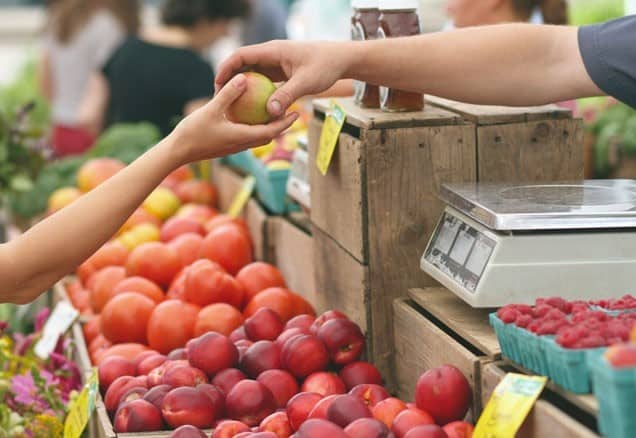4 Ways To Be A Sustainable Eater
In the documentary Before the Flood, environmental activist Leonardo DeCaprio explores the rapid progress of climate change over the past few decades. Drought, unsustainable agriculture, deteriorating coral reefs, melting ice caps, and extreme weather events have rocked virtually every corner of the world. While finding a cure to the world’s climate epidemic can seem overwhelming or even impossible, one simple solution can significantly influence the environment–sustainable eating.
Gidon Eshel, Ph.D., a research professor of environmental physics at Bard College, was interviewed in the documentary and shared how every choice we make at the supermarket has an immense effect on our environment. Although we may not know it, we are voting with our mouths. By seeking out sustainable foods and practices, we can lead the way for a healthier planet. Government leaders and policies will follow if it’s what we demand.
1. Join the Meatless Monday movement.
According to Eshel, “Beef is one of the most inefficient uses of resources on the planet.” In the US, 47 percent of land is used for food production. Of that, 70 percent is used to grow feed for cattle. Only 1 percent accounts for the foods we eat like fruits, vegetables, and nuts. Additionally, cows produce methane, a powerful greenhouse gas that absorbs the sun’s heat and warms the atmosphere.
For meat eaters, it can seem unrealistic to completely swear off animal protein. Instead, find a balance and choose to eat meatless meals on occasion. An easy way to start is to join the “Meatless Monday” movement and commit to choosing meatless meals at least one day per week. In addition to making the planet a healthier place, adding plant-based meals to your routine will benefit your health by providing a variety of vitamins, minerals, antioxidants, and fiber.
2. Read food labels.
According to the US Department of Agriculture, 31 percent of edible food is wasted and results in 25 percent of US methane emissions. Much of food waste is simply due to misreading of food labels.
Make sure you know the difference between “Sell-By,” “Use-By,” and “Best-If-Used-By” dates on food packaging. (Read up on food labels.) A food product one or two days beyond it’s “Best-If-Used-By” date doesn’t necessarily mean it’s harmful or will make you sick. The quality of the food will start to decline but you may be able to salvage the food rather than throwing it right in the trash.
3. Separate fruits and veggies in the fridge.
Some produce emits ethylene gas when it ripens and can cause other produce to ripen quickly when stored together. Produce that gives off this gas includes: avocados, under-ripe bananas, mangos, nectarines, papaya, peaches and tomatoes (when stored at room temperature); and apples, apricots, cantaloupe, figs, kiwis, honeydew melon and plums (when stored in the refrigerator). To help produce last, store fruits in a no-vegetable-allowed crisper drawer and away from ethylene producing foods.
4. Join a CSA.
CSA or Community Supported Agriculture is an easy way to buy local, seasonable produce directly from a farmer. Here’s how it works: A farmer offers a certain number of “shares” to the public, usually in the form of a box of vegetables. Members purchase a “share” or box and receive seasonal produce each week (or every other week depending on the organization). Not only are you eating local and supporting your community, but you’ll likely get some produce that you don’t normally consume. What better way to add variety to your diet? (Find a CSA near you by entering your zip code on the Local Harvest nationwide directory.)
A few other quick tips to live a more sustainable lifestyle:
- Shop using reusable grocery bags rather than plastic.
- Commit to swearing off plastic water bottles and use a reusable bottle instead.
- Store leftovers in aluminum foil rather than plastic sandwich bags. (Be sure to wash off the foil before throwing it in the recycle bin.)
- Drive green with an electric car or simply by making sure your car is tuned up to increase it’s efficiency and cut back on gas emissions.
- Replace light bulbs in your house with LED bulbs.
- Use your voice and urge your representatives to pass stronger policies to fight climate change and protect the planet.









